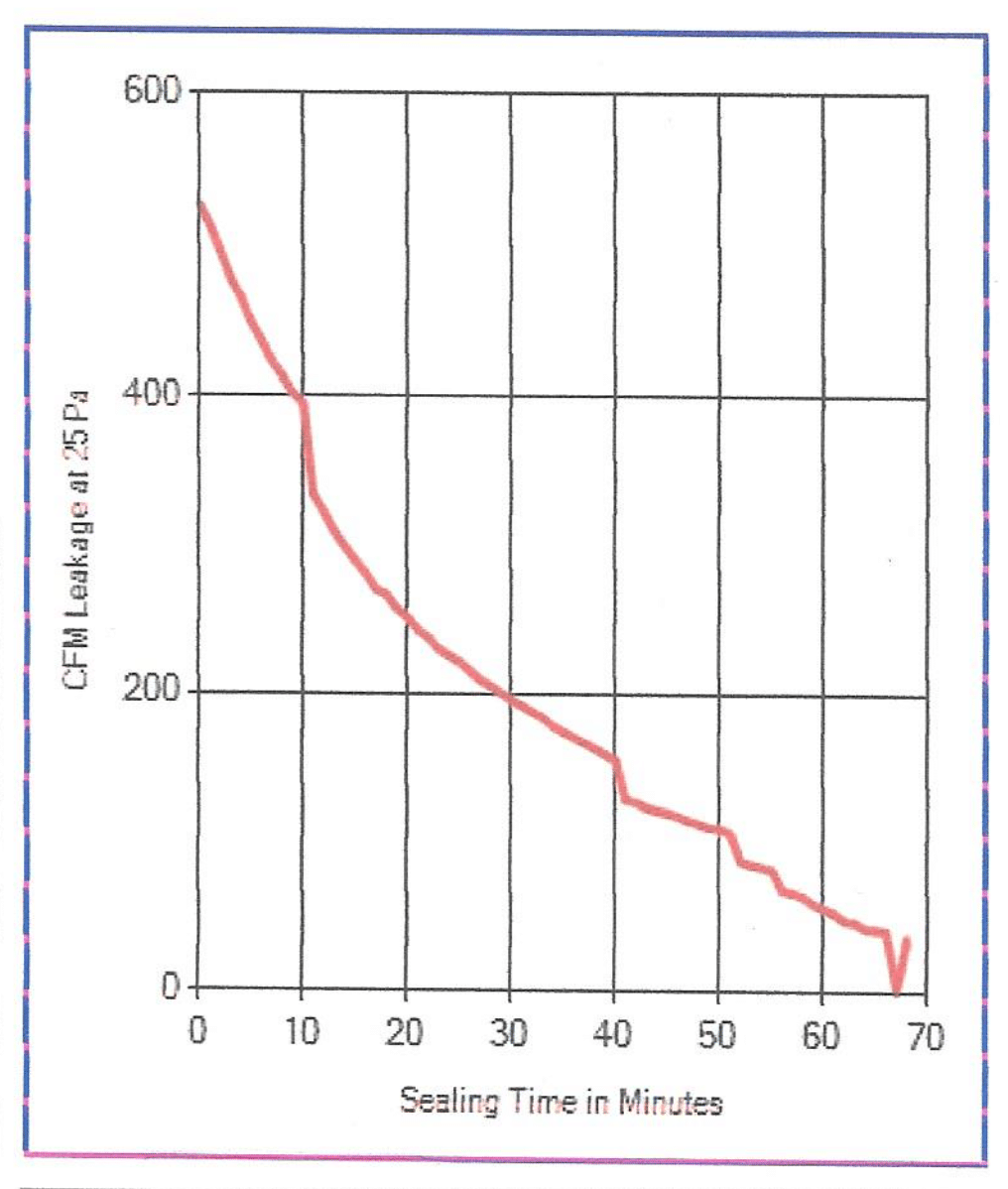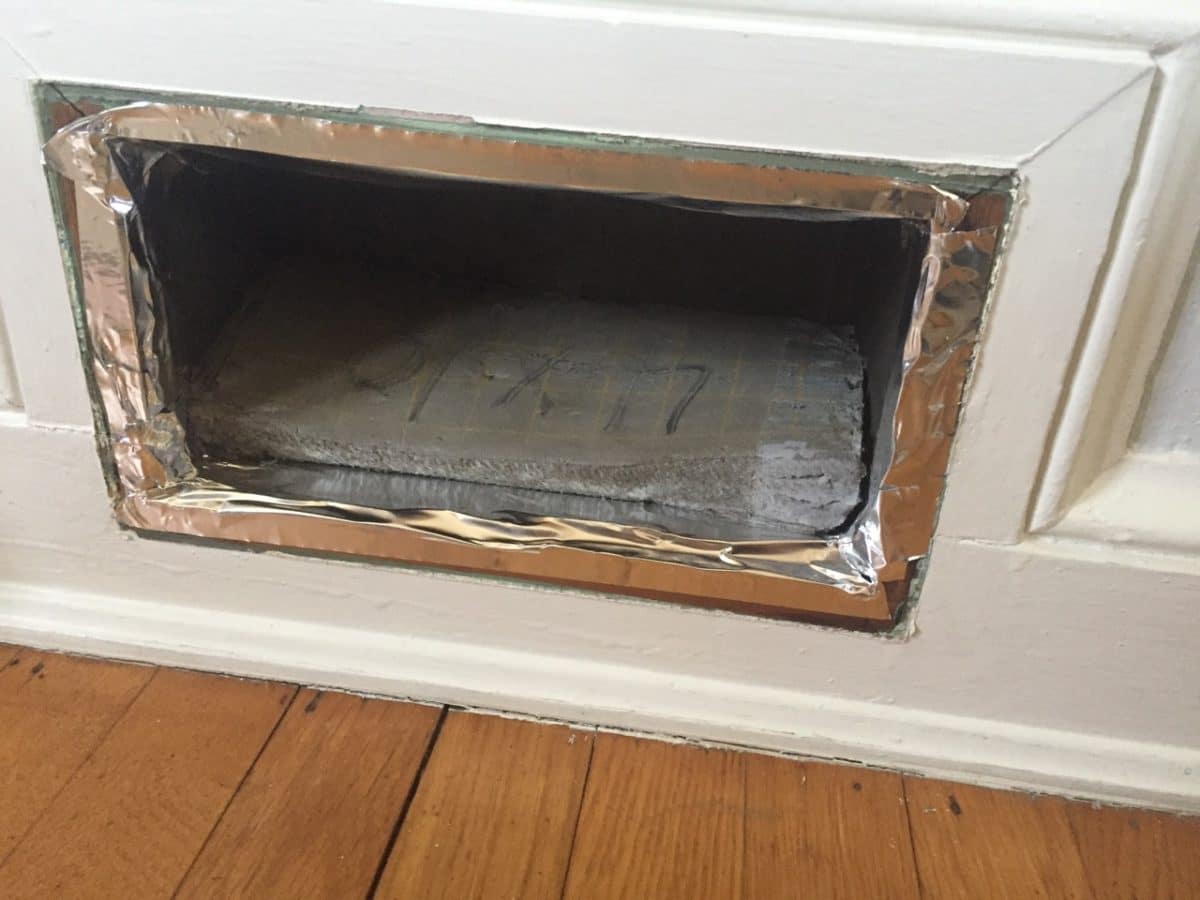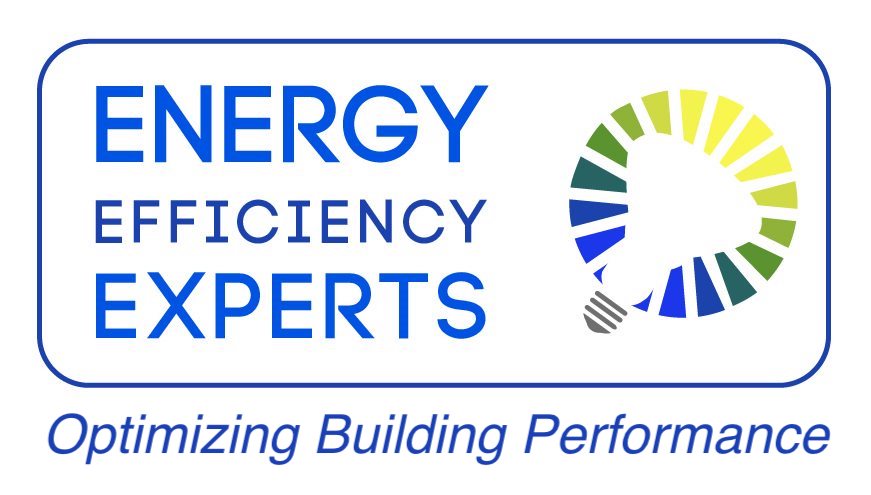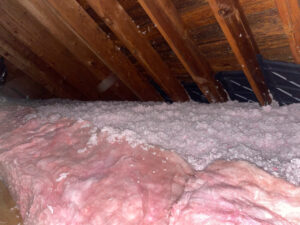What does one do about leaky ducts to save energy at home? Aeroseal is a process where the ducts are pressurized and a vapor is introduced to flow through the ducts and out of leaks and gaps filling them with a sealant. Below is a photo of the graph on the supply side (you will see the hole sheet later in this blog). As you can see, they started with 555 CFM of duct leakage and ended with a 93% reduction in the air loss. So what does this actually mean? When you have 50 gallons of water going into a hose pipe you expect 50 gallons to come out at the same pressure on the other side. When you have holes in the hose, not only is the quantity of water reduced, but the pressure is reduced as well. What this means with ductwork is that the supply registers at the end of the line are getting less air at a lower pressure being delivered than the supply ducts close to the air-handler (the furnace).

What about the return duct? Leakage in the return means that the top floor return which should be drawing more air than the other returns (because hot air rises) draws less air so if the upper return is the furthest from the air handler, the top of the house will be hotter than the lower floors. Also, if the return duct is in the attic then the impact is worse as it is drawing in hot/cold air from the attic and diluting the temperature of the house air with attic air.
Sealing ductwork impacts the efficiency of a home, but more importantly, it impacts comfort.
Here’s how it works:
- The ducts get cleaned as they are usually dirty and the sealant will not “stick” to dirty ducts. If the ducts have been cleaned in the last 3 to 4 years this step is not necessary.

- The registers are removed and the duct is sealed with a piece of foam, this will force the air that will be pressurizing the ducts to escape out of the leaks instead of the registers.
- A small access hole is cut into the supply or return and a temporary collar is attached. The air conditioning indoor coil, fan, and furnace are temporarily blocked with a foam plug to prevent sealant particles from getting into your equipment.
- The next step of the process is to pre-test how much duct leakage your system has in square inches and also calculates just how much air is escaping through leaks in your ductwork.

- Next, the non-toxic, UL tested and approved, aerosol sealant is injected into your duct system. As the sealant escapes out of ductwork through leaks it begins to collect on the edge of the hole until the leak is completely sealed. This entire process is computer controlled so you can monitor the results in real time on the computer screen.
- The supply side of the ductwork is done first, then the return side.
- At the end, a computer generated report summarizing leakage reduction including a graph showing the beginning and end duct leakage is printed.
From beginning to end it takes about 8 hours and for a cleaning and sealing the cost is $2,2oo and just sealing is $1,795. Is it worth it? Leaky ducts can correspond to a loss of 30 to 40% of the conditioned air being delivered into the walls and attics of your home, so the answer is yes, over time this process will save you money. The biggest impact is the immediate change in comfort.
See the results below:
dunn report





